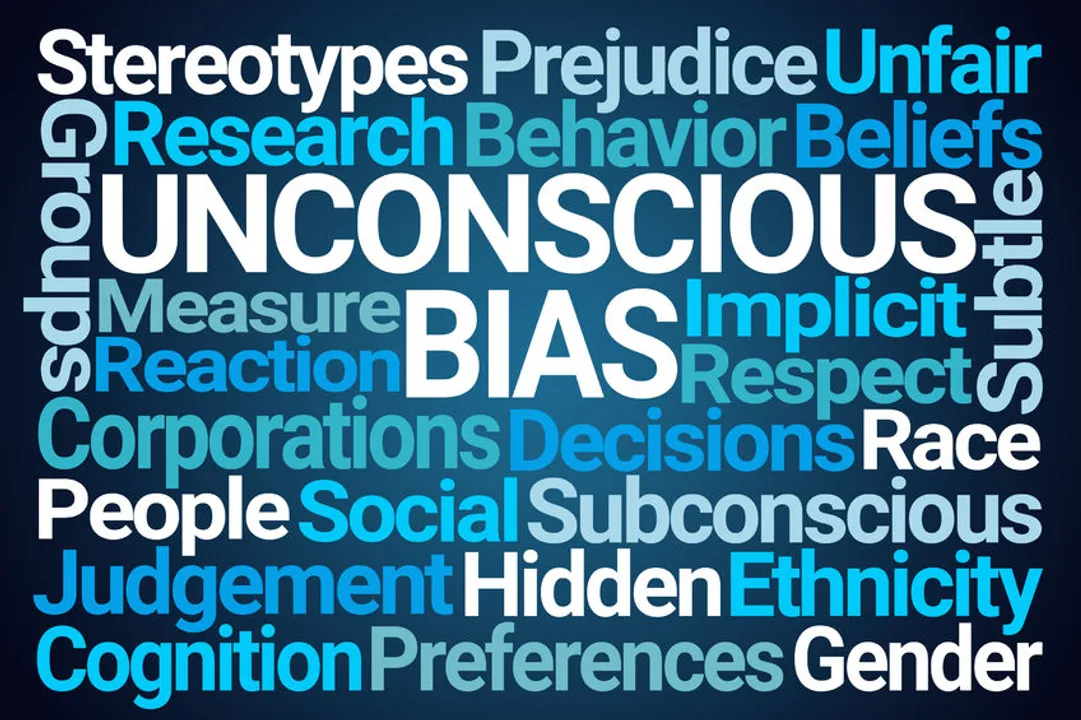Unconscious Bias is Affecting Your Institution

Robert Wilson/123RF.com
With headlines screaming about bias in the workplace, whether directed toward customers, colleagues or potential new hires, unconscious bias is an issue all employers are facing. Whether based on experience or fear of the unknown, we all hold biases. But unconscious biases can be difficult to address; many people reject the concept that they hold them. With a baseline norm of denial, how can institutions deal with unconscious bias?
The Risks of Unconscious Bias
If the behavior is egregious, and you’re unfortunate enough to be caught on video, unconscious bias can land you a top spot on YouTube, the nightly news, and in headlines across the globe. In an era of citizen journalists, where smartphones record (and often live stream) every real or imagined slight, the potential damage to your institution and your brand could be unrecoverable. Fortunately, these instances are rare, but unconscious bias could be impacting your institution in covert ways, just as, if not more damaging than negative press coverage.
Industry-wide Implications
In healthcare, much has been discovered about patient care and unconscious bias. Studies reveal physicians are less likely to provide pain medication to non-white patients, and women are less likely to be offered invasive procedures like cardiac catheterization or knee replacement. Many medical schools, aware of the data, are requiring mandatory unconscious bias training for students. If patients are affected by biases, is it hard to speculate unconscious biases translates industry-wide, as well?
For too many, bias means an overt action against another: refusing to hire someone because of race, treating one gender differently than another. Most people don’t behave that way, so their natural assumption is that they have no biases. Unconscious bias, however, is more subtle. It can be more difficult to quantify, and as a result, can be much more pervasive.
Recruitment bias
The data is clear and unambiguous: bias in the talent acquisition process exists. Research shows recruiters shy away from resumes with names they cannot pronounce, gravitating instead to those with educational credentials similar to their own (or those of the group for which they’re searching). Unconscious bias often colors every recruitment decision we make.
Bias can begin even before the first resume is received. Job postings with terms like “aggressive” or “compassionate” can be read as male or female traits. “Go-getter” reads youthful; “established” reads older. Recruiters often wonder why they’re not receiving a wider variety of candidates, even though the language they use may initiate the process of exclusion.
For many institutions, solutions lie with technology. Applicant tracking systems that remove identifying information from resumes are a good start. No names are listed, college names are removed, and any data that might suggest a protected class is eliminated from the resume, leaving only experience and credentials to be assessed.
For job postings, assessing and removing biased language is critical. For those institutions that aren’t confident of their skills, “decoding” software is available to highlight terms that may exclude.
The results of using tech, for many, have been shocking. But ultimately they’ve netted a wider applicant pipeline than ever before.
No Blame, No Shame
Beyond using technology to help reduce bias, training is a must, but the approach must be thoughtful. Training against unconscious bias can be enlightening or off-putting, depending on the tactic.
When training suggests the institution is attempting to “find the bad eggs,” it takes on an accusatory tone that will likely put staff on the defensive. When training takes the “we all have these, let’s talk about it” approach, staff is more likely to listen with an open mind and perhaps affect change. While training may not change ideas, it can change behaviors.
For the healthcare profession, science is key to understanding. Neuroscience concludes if you have a brain, you have bias. Training in the healthcare industry should follow the science as well as the moral and business implications of reducing bias.
No gain without inclusion
Training may be planned, initiated, or ongoing at your institution, but all the anti-bias training offered is futile unless supported by a culture of inclusion. A culture of inclusion emphasizes a commitment to diversity at all levels – from recruitment to retirement. . Without an inclusive environment that promotes, welcomes, and capitalizes on diversity at all levels, anti-bias training is meaningless.
Beyond the moral imperative of inclusion, there are sound business reasons to support it. More and more data reveals diversity in the workplace boosts profits, attracts and retains higher level talent, increases innovation, and more. An institution perceived negatively with regard to inclusion often sees its bottom line impacted.
Approaching unconscious bias in healthcare will require examining the science, then challenging the assumptions about biases so they can be addressed and overcome.
Related Posts
